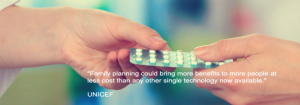Below, underlined, is the preview of the version of the article that I sent out by email in July.
We all benefit from using fossil fuels. As a consequence we all cause carbon emissions, and thus contribute to climate change. Is it possible to compensate for our greenhouse gas emissions?
“Yes and no†is the answer. Once CO2 is in the atmosphere it is almost impossible to take it out. Fortunately there are some actions we can take to decrease our impact.
The most important action is to decrease emissions in the first place. In many cases decreasing emissions has the added benefit of also saving money. Thus there are at least two advantages to walking instead of driving, turning off lights you don’t need and—well, you know the litany.
I’m retired and love to travel. How can I make up for the trip to the south of France (largely for business) this summer? Offsets offer a partial solution.
I am writing about voluntary programs where a person voluntarily pays to compensate for his carbon emissions. The PopOffsets website explains this concept well:
“Offsetting is a way of compensating for our residual “footprintâ€: the level we won’t or cannot reasonably expect to go below. The idea is to pay for projects – which would not otherwise be implemented – which take emissions out of the system to compensate for what we put into it. In other words if an individual or organisation has done what it reasonably can to reduce its emissions (insulation, green energy, efficiency measures, waste reduction, etc), it can compensate for the remainder by investing in projects designed to reduce the amount released to the atmosphere and/or to capture what is being released. Typical projects have traditionally ranged from hydro-electric, solar and wind energy schemes to more efficient cooking stoves to (re)forestation to biofuels to Carbon Capture & Storage (Sequestration).â€
There are many different organizations that will help you calculate your carbon emissions, then figure the amount of money that would offset those emissions. One of them is American Forests. Trees absorb CO2 as they grow as well as providing many other benefits. This organization’s website has a carbon calculator to help estimate your carbon footprint, and thus the number of trees that need to be planted to offset that footprint. It also makes it easy to make a donation to so they can plant those trees for you.
Where does human population fit into this? If there are fewer emitters, then there will be fewer emissions. Family planning programs are a good way to slow emissions and thereby slow climate change. Indeed, sophisticated calculations suggest that voluntary family planning programs can make a significant step toward limiting greenhouse gas emissions. A team headed by Brian O’Neill has shown “…that slowing population growth could provide 16–29% of the emissions reductions suggested to be necessary by 2050 to avoid dangerous climate change.â€
My column shares its name with an organization in England. The British Population Matters has recognized the advantages of making family planning available to more people. In order to put this noble idea into action they started a unique offset program, PopOffsets. It collects money to support family planning programs. Remember World Vasectomy Day, in which men all over the world get snipped? it received funding from PopOffsets. So has a “backpack nurse†who provides family planning services to people in rural Kenya, and WINGS, a Guatemalan organization that provides reproductive healthcare. PopOffsets has also supported a Population, Health, Environment program in Ethiopia with contraceptive supplies. More surprising is that they also made a grant to an agency close to home—the Utah Population and Environment Coalition.
The goal of PopOffsets is “less carbon, smaller familiesâ€. They are apparently unique in the world, and would like to see similar organizations in other countries.
Back to my trip to France. It is roughly 5400 miles from Bayfield to Montpellier, France where my conference will be held. Doubling that for a round trip, we can round up to 11,000 miles, most of which will be flying. The PopOffsets website says that 230 grams of CO2 are emitted for every passenger mile or about 2 ½ tons for this trip. They estimate that $15 spent on family planning will offset one ton of CO2, thus my payment to them should be $37.50. I made a donation for more than that amount knowing that it will support good projects.
For the future of the planet it is important to minimize your carbon footprint. What you cannot get rid of you can offset with PopOffsets!
© Richard Grossman MD, 2015
